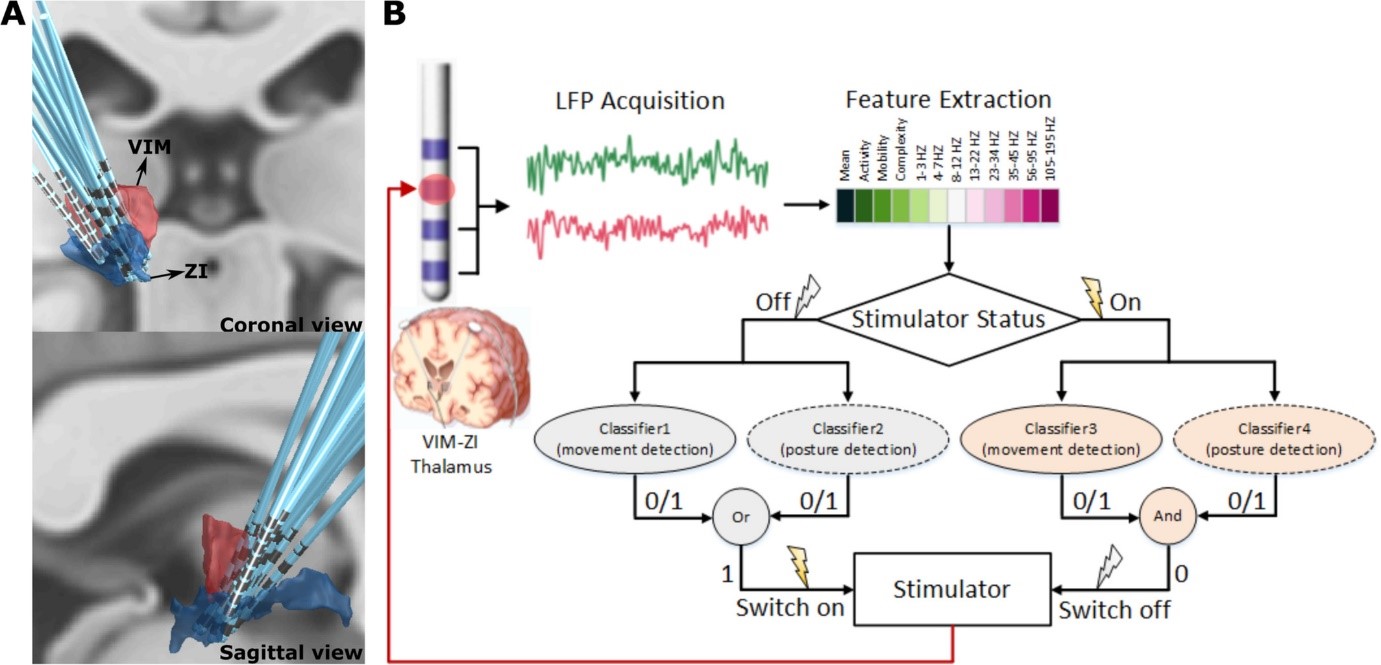Closed-Loop Deep Brain Stimulation for Essential Tremor Based on Thalamic Local Field Potentials.
Continuous deep brain stimulation is a therapy for essential tremor. Here, we trialled a new system for delivering intermittent brain stimulation, so that it only occurs when necessary. We show that brain signals recorded from stimulation electrodes can be analysed to reliably detect movements that provoke tremor, and that intermittent stimulation triggered by these brain signals is achievable and effective.
High-frequency thalamic stimulation is an effective therapy for essential tremor, which mainly affects voluntary movements and/or sustained postures. However, continuous stimulation may deliver unnecessary current to the brain due to the intermittent nature of the tremor. We proposed to close the loop of thalamic stimulation by detecting tremor-provoking movement states using local field potentials recorded from the same electrodes implanted for stimulation, so that the stimulation is only delivered when necessary. Eight patients with essential tremor participated in this study. Patient-specific support vector machine classifiers were first trained using data recorded while the patient performed tremor-provoking movements. Then, the trained models were applied in real-time to detect these movements and triggered the delivery of stimulation. Using the proposed method, stimulation was switched on for 80.37 ± 7.06% of the time when tremor-evoking movements were present. In comparison, the stimulation was switched on for 12.71 ± 7.06% of the time when the patients were at rest and tremor-free. Compared with continuous stimulation, a similar amount of tremor suppression was achieved while only delivering 36.62 ± 13.49% of the energy used in continuous stimulation. The results suggest that responsive thalamic stimulation for essential tremor based on tremor-provoking movement detection can be achieved without any requirement for external sensors or additional electrocorticography strips. Further research is required to investigate whether the decoding model is stable across time and generalizable to the variety of activities patients may engage with in everyday life. © 2021 The Authors. Movement Disorders published by Wiley Periodicals LLC on behalf of International Parkinson and Movement Disorder Society.

2021. J Neural Eng, 18(4):046023.
2025. Brain, 148(6):2093-2107.